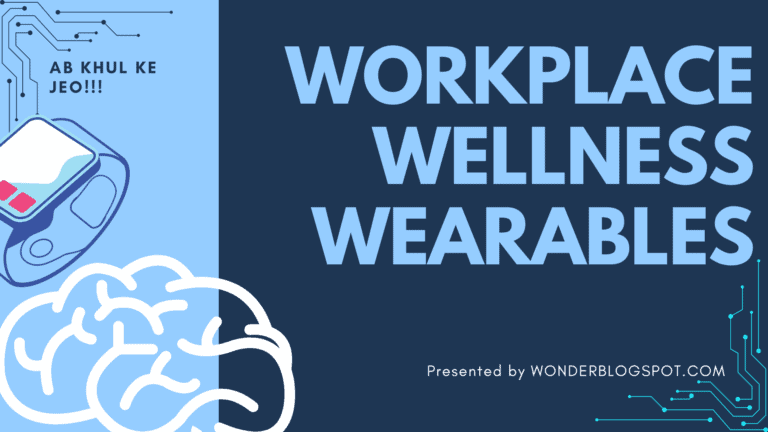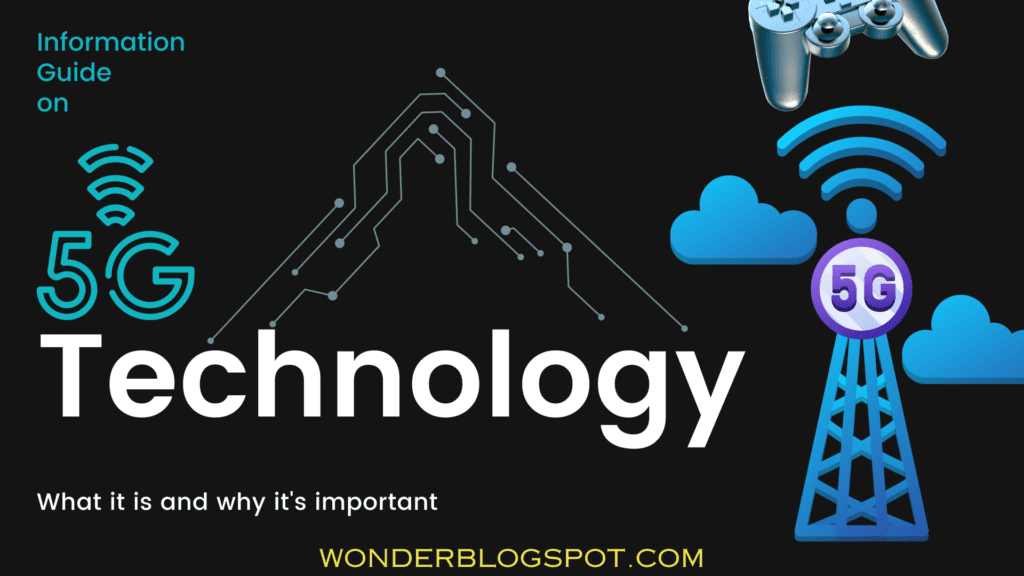Workplace Wellness Wearables: Now Maximize Potential at Workplace
Fitbits for Work? How Wearables Are Upping Your Office Wellness Game.
Feeling like a desk potato at work? 🫨
Us too. 🐶
Between crushing deadlines and endless emails, staying healthy can fall by the wayside. But what if your workday buddy could be a tiny gadget on your wrist?
Enter workplace wellness wearables. 💯
These aren’t your average fitness trackers – they’re designed to help you stay on top of your well-being right in the office (or wherever your home office might be these days!). Think sleep tracking, stress monitoring, and even reminders to get moving – all with the goal of making you a happier, healthier worker. 🧘
So, ditch the office doughnut for a sec and join us as we explore the world of wearable wellness! We’ll break down the different things, the cool things they can do, and even some stuff to think about before strapping one on.
Are wearables the key to unlocking peak you at work?
Let’s find out here! 🥂

Table of Contents
Introduction to Workplace Wellness Wearables
Importance of Workplace Wellness Programs
Employee Morale and Satisfaction: Implementing workplace wellness programs shows employees that their employer cares about their health and overall well-being. This can boost morale and job satisfaction, leading to higher levels of employee engagement and retention.
Reduced Absenteeism and Healthcare Costs: By promoting healthier lifestyle choices and providing resources for preventive care, workplace wellness programs can help reduce absenteeism due to illness. This, in turn, can lower healthcare costs for both employees and employers.
Increased Productivity and Performance: Healthy employees are more likely to be productive and perform better at work. Workplace wellness programs that focus on physical fitness, stress management, and mental health support can contribute to improved productivity and job performance.
Positive Organizational Culture: Investing in employee wellness fosters a positive organizational culture centered around health, well-being, and work-life balance. This can lead to stronger employee relationships, improved teamwork, and a more cohesive workplace environment.
Attracting and Retaining Talent: In today’s competitive job market, offering comprehensive workplace wellness programs can be a significant factor in attracting top talent and retaining valuable employees. Candidates are increasingly seeking employers who prioritize employee health and well-being.
Overall, workplace wellness programs are essential for promoting a healthy, happy, and productive workforce. They not only benefit individual employees by supporting their physical and mental health but also contribute to the long-term success and sustainability of the organization.
Evolution of Wearable Technology
Wearable technology has undergone a remarkable evolution, transitioning from simple fitness trackers to sophisticated devices with diverse applications in the workplace. The journey of wearable technology can be traced back to early pedometers and heart rate monitors, which were primarily used by fitness enthusiasts to track their exercise routines and health metrics.
However, advancements in sensor technology, miniaturization, and connectivity have paved the way for a new generation of wearable devices designed for broader applications, including the workplace. These modern wearables incorporate a wide range of sensors, including accelerometers, gyroscopes, GPS, heart rate monitors, and skin conductivity sensors, among others, to monitor various aspects of human physiology and behavior.
The integration of wireless connectivity protocols such as Bluetooth and Wi-Fi enables seamless communication between wearables and other devices, such as smartphones, tablets, and computers. This connectivity allows wearables to sync data in real-time, provide notifications and alerts, and even facilitate remote monitoring and control.
One significant trend in the evolution of wearable technology is the shift towards multifunctionality and versatility. Modern wearables are not limited to tracking physical activity or monitoring biometric data; they also offer a wide range of features and functionalities tailored to specific use cases and user preferences. For example, smartwatches can serve as communication devices, navigation aids, payment terminals, and even personal assistants, in addition to their health and fitness tracking capabilities.
In the workplace context, wearable technology has emerged as a valuable tool for enhancing employee productivity, safety, and well-being. Wearables equipped with features such as activity tracking, posture correction, stress management, and fatigue detection can help employees maintain optimal health and performance throughout their workday. Moreover, wearables with built-in biometric authentication capabilities can enhance security and access control in sensitive environments.
Overall, the evolution of wearable technology has revolutionized the way we interact with and monitor our bodies, both in personal and professional settings. As wearables continue to evolve and innovate, their potential to improve workplace productivity, efficiency, and employee well-being will only grow.
Benefits of Workplace Wellness Wearables
Physical Health Monitoring: Workplace wellness wearables enable employees to track various aspects of their physical health, including activity levels, heart rate, calorie expenditure, and sleep patterns. By providing real-time feedback and insights, these devices empower individuals to make informed decisions about their lifestyle habits, leading to improved overall health and fitness.
Mental Health Tracking: In addition to monitoring physical health metrics, many workplace wellness wearables also incorporate features for tracking mental well-being. These may include stress monitoring, mood tracking, meditation guidance, and breathing exercises. By raising awareness of stress levels and promoting relaxation techniques, these devices help employees manage stress more effectively and improve their overall mental health.
Productivity Enhancement: Workplace wellness wearables can also contribute to enhanced productivity and performance in the workplace. Features such as activity reminders, posture correction prompts, and fatigue detection help employees maintain optimal focus, energy levels, and concentration throughout the workday. By promoting healthy work habits and preventing burnout, these devices support long-term productivity and job satisfaction.
Promotion of Healthy Habits: Workplace wellness wearables encourage employees to adopt and maintain healthy lifestyle habits, such as regular exercise, proper nutrition, hydration, and adequate sleep. Through gamification, challenges, and incentives, these devices motivate individuals to set and achieve health-related goals, fostering a culture of wellness within the organization.
Cost Savings for Employers: Investing in workplace wellness wearables can lead to significant cost savings for employers in the long run. By promoting employee health and well-being, organizations can reduce healthcare costs associated with preventable illnesses, absenteeism, and presenteeism. Moreover, a healthier workforce is likely to be more engaged, productive, and resilient, ultimately contributing to the company’s bottom line.
Implementation Strategies for Workplace Wellness Programs
Employee Engagement: One of the critical factors in the success of workplace wellness programs is active employee participation and engagement. Organizations should strive to create a culture of health and wellness by promoting awareness, education, and participation in wellness initiatives. This can be achieved through employee communication, incentives, rewards, challenges, and events that encourage active engagement and participation.
Data Privacy and Security: Protecting employee privacy and ensuring the security of health data collected through workplace wellness wearables is paramount. Organizations should implement robust data privacy policies and security measures to safeguard sensitive information and comply with relevant regulations such as GDPR and HIPAA. This includes obtaining informed consent from employees, transparently communicating data usage policies, and utilizing secure data storage and transmission protocols.
Integration with Existing Systems: Seamless integration of workplace wellness wearables with existing HR and wellness platforms is essential for maximizing the effectiveness and usability of these programs. This integration enables employees to access wellness resources, track their progress, and receive personalized recommendations within familiar digital environments. It also facilitates data exchange and interoperability between different systems, ensuring consistency and accuracy of health information.
Customization and Personalization: Recognizing that employees have diverse needs, preferences, and health goals, workplace wellness programs should offer customization and personalization options. This includes allowing employees to choose their preferred wearable devices, tailor their wellness goals and activities, and receive personalized recommendations and feedback based on their individual health profiles. Customization enhances engagement and relevance, making wellness programs more effective and appealing to employees.
Leadership Support and Involvement: Leadership support and involvement are critical drivers of workplace wellness program success. Organizations should demonstrate commitment to employee health and well-being from top management down, actively promoting and participating in wellness initiatives. Leaders can lead by example, communicate the importance of wellness, allocate resources, and integrate wellness goals into the organization’s mission, vision, and values.
Evaluation and Feedback: Continuous evaluation and feedback are essential for assessing the effectiveness of workplace wellness programs and identifying areas for improvement. Organizations should regularly collect and analyze data on program participation, health outcomes, employee satisfaction, and return on investment. Feedback from employees can provide valuable insights into their experiences, preferences, and needs, enabling organizations to refine and tailor wellness initiatives accordingly.
By implementing these strategies thoughtfully and proactively, organizations can create workplace wellness programs that effectively promote employee health, engagement, and productivity while respecting privacy and security considerations.
Challenges and Limitations of Workplace Wellness Wearables
Privacy Concerns: One of the primary concerns surrounding workplace wellness wearables is the potential invasion of employee privacy. Collecting and analyzing personal health data raise concerns about data security, confidentiality, and potential misuse. Employees may feel uncomfortable sharing sensitive health information with their employers, leading to reluctance in adopting wellness wearables and participating in wellness programs.
Accessibility and Equity: Access to workplace wellness wearables may not be equitable for all employees. Some employees may lack access to the necessary technology or resources to participate fully in wellness programs, creating disparities in health outcomes. Additionally, individuals with disabilities or chronic health conditions may find certain wearables inaccessible or irrelevant to their needs, further exacerbating health inequities within the workforce.
Data Interpretation: Workplace wellness wearables generate vast amounts of data, which can be overwhelming for both employees and employers to interpret and act upon effectively. Without proper data analysis tools and expertise, it can be challenging to derive meaningful insights from the data collected by wearables. Moreover, inaccuracies or inconsistencies in data collection and interpretation may undermine the credibility and utility of wellness programs.
Employee Trust and Compliance: Building trust and ensuring employee compliance with workplace wellness programs can be challenging, particularly in environments where there is a perceived lack of transparency or accountability. Employees may be skeptical about the intentions behind wellness initiatives and may resist participating if they perceive them as intrusive or coercive. Organizations must prioritize transparency, communication, and employee autonomy to foster trust and encourage voluntary participation.
Sustainability and Long-Term Engagement: Sustaining employee engagement and motivation in workplace wellness programs over the long term can be challenging. Initiatives that rely solely on incentives or rewards may fail to create lasting behavior change or address underlying barriers to wellness. Organizations need to design holistic and multifaceted wellness programs that address the diverse needs and motivations of employees and provide ongoing support and encouragement for sustained engagement.
Addressing these challenges and limitations requires a holistic approach that prioritizes employee trust, privacy, equity, and engagement. By fostering a culture of transparency, inclusivity, and empowerment, organizations can overcome these challenges and realize the full potential of workplace wellness wearables in promoting employee health and well-being.
Future Trends in Workplace Wellness Wearables
Advancements in Sensor Technology:
- One of the key trends in workplace wellness wearables is the continued advancements in sensor technology. Future wearables will feature more sophisticated sensors capable of capturing a wider range of health metrics with higher accuracy and precision.
- Advanced biometric sensors, such as photoplethysmography (PPG) sensors and electrodermal activity (EDA) sensors, will enable more comprehensive health monitoring, including blood oxygen levels, hydration status, and stress levels.
Integration with Artificial Intelligence (AI):
- The integration of workplace wellness wearables with AI-driven analytics platforms will revolutionize the way health data is analyzed and interpreted. AI algorithms will be able to process vast amounts of data collected by wearables, identify patterns and trends, and provide actionable insights and personalized recommendations to users.
- AI-powered predictive analytics will enable proactive interventions to prevent health issues before they occur, such as predicting and preventing workplace injuries or identifying early signs of chronic diseases.
Customization and Personalization:
- Future workplace wellness wearables will be increasingly personalized and customizable to meet the unique needs and preferences of individual users. Wearables will offer personalized health assessments, goal-setting tools, and adaptive coaching based on users’ health profiles, preferences, and feedback.
- Customizable form factors and modular designs will allow users to tailor their wearables to suit their specific preferences and lifestyles, enhancing comfort, usability, and adoption rates.
Emphasis on Mental Health and Well-Being:
- Mental health tracking and support will become a prominent feature of workplace wellness wearables in the future. Wearables will incorporate advanced algorithms and sensors capable of detecting and analyzing subtle indicators of mental well-being, such as mood fluctuations, cognitive performance, and sleep quality.
- Integrated mental health coaching and support programs will provide users with personalized recommendations and interventions to manage stress, improve resilience, and enhance overall mental well-being.
Ecosystem Integration and Interoperability:
- Future workplace wellness wearables will be seamlessly integrated into broader ecosystems of health and wellness solutions, including healthcare providers, insurance companies, and corporate wellness platforms.
- Interoperability standards and open APIs will enable data sharing and collaboration between different wearable devices and digital health platforms, allowing for a more holistic and connected approach to employee wellness.
Advancements in Sensor Technology
Biometric Sensors: Future workplace wellness wearables will feature advanced biometric sensors capable of measuring a variety of physiological parameters. For example, photoplethysmography (PPG) sensors can accurately measure heart rate and blood oxygen levels, while electrodermal activity (EDA) sensors can assess stress levels by measuring changes in skin conductivity.
Environmental Sensors: In addition to monitoring individual health metrics, future wearables may incorporate environmental sensors to assess external factors that impact well-being. These sensors can detect environmental pollutants, temperature fluctuations, and noise levels, providing users with valuable information to optimize their work environment for better health and productivity.
Activity Recognition Sensors: Advanced activity recognition sensors will enable wearables to automatically detect and classify various physical activities and movements. This capability allows wearables to provide more accurate activity tracking and feedback, helping users set and achieve their fitness goals more effectively.
Sleep Monitoring Sensors: Sleep monitoring sensors will become increasingly sophisticated, capable of tracking not only the duration but also the quality and stages of sleep. Wearables equipped with advanced sleep monitoring sensors can provide users with insights into their sleep patterns, identify potential sleep disturbances, and offer personalized recommendations for improving sleep quality.
Hydration and Nutrition Sensors: Future wearables may incorporate sensors to monitor hydration levels and nutritional intake. These sensors can measure factors such as hydration status, electrolyte levels, and nutrient absorption, helping users maintain optimal hydration and nutrition throughout the day.
Integration with Artificial Intelligence (AI)
Data Analysis and Interpretation: AI algorithms can analyze data collected by workplace wellness wearables in real-time, identifying correlations, anomalies, and trends that may not be apparent through manual analysis. By leveraging machine learning and pattern recognition techniques, AI can provide deeper insights into users’ health metrics and behavior patterns, enabling more accurate and timely interventions.
Predictive Analytics: One of the key strengths of AI is its ability to predict future outcomes based on historical data and patterns. In the context of workplace wellness wearables, AI-powered predictive analytics can anticipate potential health issues or risks, such as fatigue, stress, or burnout, before they manifest. This enables proactive interventions and preventive measures to mitigate risks and promote employee well-being.
Personalized Recommendations: AI algorithms can generate personalized recommendations and interventions tailored to individual users’ health profiles, preferences, and goals. Whether it’s suggesting specific exercises to improve cardiovascular health, recommending stress management techniques, or optimizing sleep schedules, AI-powered coaching can help users achieve their wellness objectives more effectively.
Continuous Learning and Improvement: AI systems can continuously learn and adapt based on feedback and new data inputs, improving their accuracy and effectiveness over time. As users interact with workplace wellness wearables and implement the recommendations provided by AI, the algorithms can refine their models and algorithms, ensuring that the guidance remains relevant and impactful.
Integration with Healthcare Systems: AI-powered workplace wellness wearables can seamlessly integrate with broader healthcare systems, including electronic health records (EHRs), telemedicine platforms, and population health management systems. This integration enables seamless data sharing, collaboration, and coordination of care between users, healthcare providers, and other stakeholders, facilitating more holistic and integrated approaches to employee health and well-being.
Customization and Personalization
Tailored Health Assessments: Workplace wellness wearables will offer personalized health assessments based on users’ unique characteristics, such as age, gender, medical history, and lifestyle factors. These assessments may include comprehensive health screenings, risk assessments, and recommendations for preventive care and wellness interventions.
Goal-Setting Tools: Users will have the ability to set personalized health and wellness goals based on their individual preferences and priorities. Whether it’s improving fitness levels, managing stress, or achieving better sleep quality, wearables will provide goal-setting tools and progress tracking features to help users stay motivated and on track towards their objectives.
Adaptive Coaching and Feedback: Workplace wellness wearables will deliver adaptive coaching and feedback tailored to users’ progress, preferences, and feedback. AI algorithms will analyze users’ data and behavior patterns to provide personalized recommendations and interventions, adjusting the level and frequency of feedback based on individual needs and preferences.
Customizable Form Factors: Future wearables will offer customizable form factors and modular designs that allow users to personalize their devices to suit their preferences and lifestyles. Whether it’s choosing the size, style, or functionality of the wearable, users will have the flexibility to customize their devices to meet their specific needs and preferences.
User-Centric Design: Workplace wellness wearables will prioritize user-centric design principles, ensuring that devices are intuitive, user-friendly, and accessible to users of all ages and abilities. From simplified user interfaces to ergonomic designs, wearables will be designed with the user experience in mind, enhancing usability and adoption rates.
*** Conclusion ***
The evolution of workplace wellness wearables represents a significant milestone in the quest to create healthier, happier, and more productive work environments. From advancements in sensor technology to integration with artificial intelligence and emphasis on customization and personalization, workplace wellness wearables offer exciting possibilities for promoting employee health, engagement, and well-being.
By leveraging wearable technology and data-driven insights, organizations can empower employees to take proactive steps towards improving their health and performance in the workplace. From monitoring physical activity and sleep patterns to managing stress and enhancing productivity, workplace wellness wearables offer a holistic approach to employee wellness that aligns with the evolving needs and expectations of modern workplaces.
However, the adoption and implementation of workplace wellness wearables are not without challenges. Privacy concerns, accessibility issues, and data interpretation complexities must be addressed to ensure the successful deployment and uptake of these technologies. Moreover, sustaining employee engagement and motivation over the long term requires ongoing commitment, communication, and support from organizational leadership.
Nevertheless, the potential benefits of workplace wellness wearables far outweigh the challenges. By investing in employee health and well-being, organizations can create a culture of wellness that fosters resilience, creativity, and productivity. As workplace wellness wearables continue to evolve and innovate, they will play an increasingly integral role in shaping the future of work, driving positive outcomes for both employees and employers alike.
In conclusion, workplace wellness wearables represent a powerful tool for promoting employee health, engagement, and performance in the workplace. By embracing these technologies and implementing comprehensive wellness programs, organizations can create environments where employees thrive, succeed, and contribute to the overall success of the organization.
Frequently Asked Questions
Are workplace wellness wearables intrusive?
How can organizations address privacy concerns related to workplace wellness wearables?
Do workplace wellness wearables benefit all employees equally?
What types of data do workplace wellness wearables collect?
How can organizations measure the effectiveness of workplace wellness programs?
What are wellness wearables?
What are wearables in the workplace?
What are 3 examples of wearable technology?
Smartwatches: Mini wrist computers tracking fitness, sleep, and even messages.
Fitness Trackers: Clip-on or wristbands monitoring steps, calories burned, and sleep for your fitness goals.
Smart Glasses: Glasses that display info, take calls, or create augmented reality experiences.
















